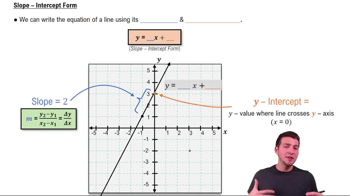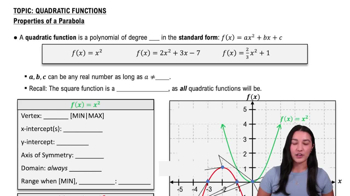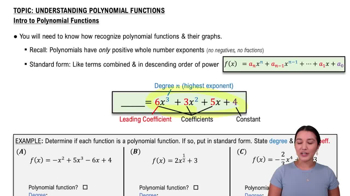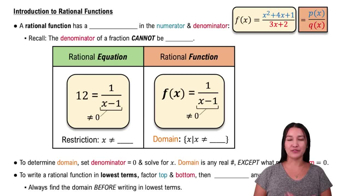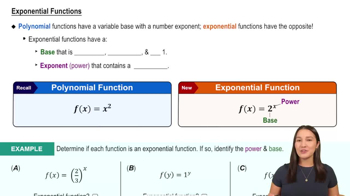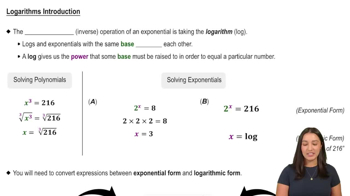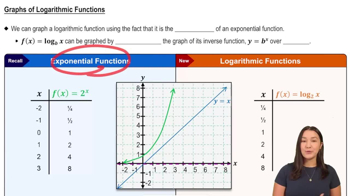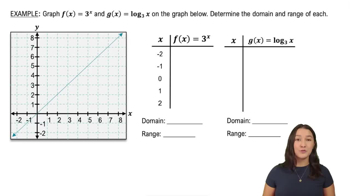Table of contents
- 0. Functions7h 52m
- Introduction to Functions16m
- Piecewise Functions10m
- Properties of Functions9m
- Common Functions1h 8m
- Transformations5m
- Combining Functions27m
- Exponent rules32m
- Exponential Functions28m
- Logarithmic Functions24m
- Properties of Logarithms34m
- Exponential & Logarithmic Equations35m
- Introduction to Trigonometric Functions38m
- Graphs of Trigonometric Functions44m
- Trigonometric Identities47m
- Inverse Trigonometric Functions48m
- 1. Limits and Continuity2h 2m
- 2. Intro to Derivatives1h 33m
- 3. Techniques of Differentiation3h 18m
- 4. Applications of Derivatives2h 38m
- 5. Graphical Applications of Derivatives6h 2m
- 6. Derivatives of Inverse, Exponential, & Logarithmic Functions2h 37m
- 7. Antiderivatives & Indefinite Integrals1h 26m
0. Functions
Common Functions
Problem 77g
Textbook Question
Textbook QuestionExplain why or why not Determine whether the following statements are true and give an explanation or counterexample.
If , then
 Verified Solution
Verified SolutionThis video solution was recommended by our tutors as helpful for the problem above
Video duration:
2mPlay a video:
Was this helpful?
Key Concepts
Here are the essential concepts you must grasp in order to answer the question correctly.
Function and Inverse Function
A function maps each input to a single output, while an inverse function reverses this mapping. For a function f(x), the inverse f^{-1}(x) satisfies the condition f(f^{-1}(x)) = x for all x in the domain of f^{-1}. Understanding this relationship is crucial for determining whether the given statement about f(x) and its inverse is true.
Recommended video:

Derivatives of Other Inverse Trigonometric Functions
Domain and Range
The domain of a function is the set of all possible input values, while the range is the set of all possible output values. For the function f(x) = 1/x, the domain excludes zero, as division by zero is undefined. When analyzing the inverse function, it is essential to consider how the domain and range of f affect those of f^{-1}.
Recommended video:
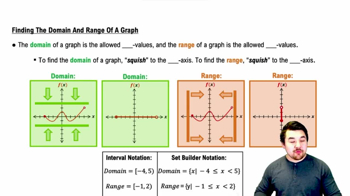
Finding the Domain and Range of a Graph
Counterexamples
A counterexample is a specific case that disproves a general statement. In the context of functions and their inverses, providing a counterexample involves finding a value for which the proposed relationship does not hold. This is a critical skill in calculus, as it helps clarify the conditions under which statements about functions and their inverses are valid.

 5:57m
5:57mWatch next
Master Graphs of Common Functions with a bite sized video explanation from Nick
Start learningRelated Videos
Related Practice



